As a kid who grew up in the North End of Hamilton in the 60s, the transformation of Hamilton from the ambitious Steel City to a flourishing Arts City that has accelerated since the turn of the century has been eye-opening and welcome. Supercrawl has been around for a dozen years and Artcrawl longer than that. There has been an exodus of Toronto artists, gallery owners, and restaurateurs fleeing the high costs of our provincial capital for the benefit of lower residential costs in Hamilton while maintaining proximity to the 6. This has revitalized commercial alleys here such as James, Locke, Ottawa, and Barton streets.
Sure, we pay the price of gentrification and a rise in our own housing costs, but we have Guillermo del Toro, Umbrella Academy, Mayor of Kingstown, and Handmaid’s Tale filming here. Plans are crystallizing for a huge film studio complex on the bayside Tiffany Lands site once considered for the rebuild of Ivor Wynne Stadium.
Apart from and in spite of Toronto, we have also become a hub of sorts for cartoonists. Joe Ollmann, David Collier, Sylvia Nickerson, and Kevin Mutch are here. Comic book related creators such as Mike Walsh, Greg Hyland, James Waley, Vince Marchesano, and Mark Innes are all in Hamilton and Ken Lashley is a tangent off in Burlington. In close orbit to this Hamilton comics hub are Seth in Guelph and Dave Sim (who was born in Hamilton) in Kitchener, as well as Rob Walton in Niagara.
Just a couple of years ago, the Art Gallery of Hamilton, with the curative help of Joe Ollmann, hosted the landmark exhibit of Canadian independent cartoonists titled “This is Serious: Canadian Indie Comics” and showed the quality of Canadian graphic art and its impact across the world. We can go as far as to say that cartooning has become a “respectable” (but still not generally “profitable”) vocation and the products of cartooning can be seen on expanding bookshelves in public libraries and bookstores and on our home and theatre screens.
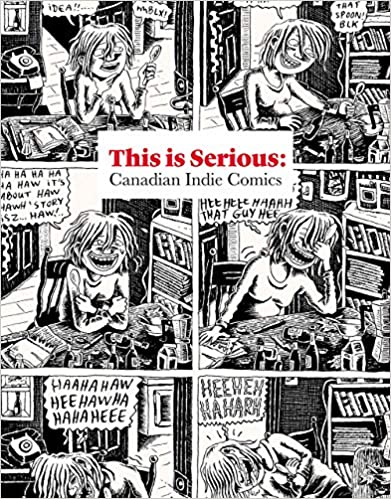
But back during WWII being a comic artist in Canada wasn’t the lauded profession it has become today. There were no artist’s alleys in Comic Cons, no Eisner or Joe Shuster Awards, and pay was far more meagre. In fact, there were no comic book artists in Canada when WWII started because there were no Canadian comic books at that time. It took just over a year of the war to knock back Canada’s dollar to the point where the Canadian government had to come up with a ban on certain American products it deemed unnecessary to the war effort. Among these were most American comics and pulps.
With a lack of comic books on newsstand shelves, publishers in Vancouver, Toronto and Montreal decided to get into the game and this provided much-needed opportunities for artists and would-be artists to get into the game. One of the publishers based in Toronto, Commercial Signs of Canada/Bell Publications, hired three cartoonists who had an association with Hamilton and these three along with Hamiltonian Win Mortimer are the subjects of my show “Steel City Supermen” at the Dundas Art Gallery running this month from March 4-27.
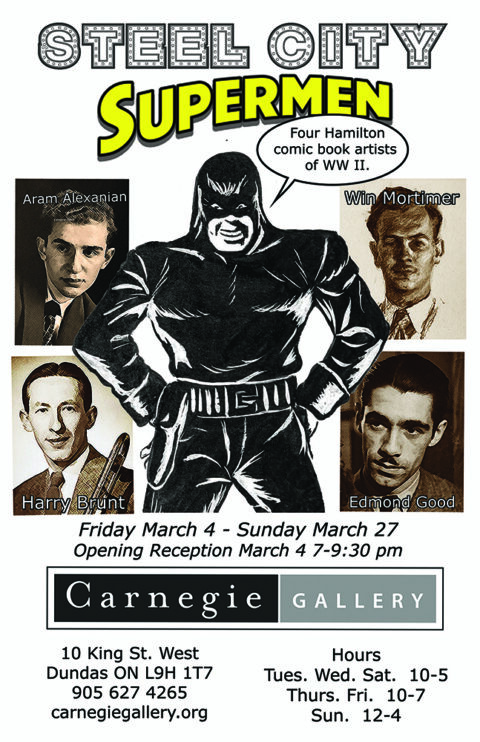
The first of these was Edmond Good, a 31-year-old ex-pat American who moved with his family to Westdale Village in Hamilton in his late teens. He was born in Saco, Maine in 1910 and his parents were originally from the Maritimes. “Mond,” as his family called him, had a penchant for art and established a commercial art studio in the city in the 30s. Cy Bell hired Good in late 1941 and his first work for him was Rex Baxter in Dime Comics No. 1. Good became a main cover artist and served as Art Director for the company for a few months before Bell hired Adrian Dingle in the spring of 1942. Good also did a number of Canadian pulp covers at this time.
By the summer of 1943, Good decided to try and expand his opportunities and, with his family, left for the U.S. settling in an art colony in Kingston, NY. There he became the artist for the syndicated daily and Sunday Scorchy Smith series and did some Tarzan dailies and Sundays. He later went on to draw Monte Hale, Dagar the Desert Hawk, and was the artist who introduced Tomahawk in Star-Spangled Comics No. 69. Good briefly had his own comic line in the mid-50’s Good Comics Inc. which offered two titles, Johnny Law, Sky Ranger and Rusty, the Boy Detective. He was hired as Art Director for Tupperware in the 1960s and moved his family to Florida where he died in 1991.
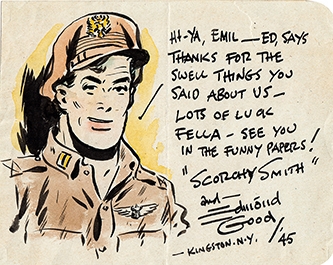
But before leaving Edmond Good, I want to point out a fact that seems to have gone unheralded in comic history. In September 1942 Good did a painting for the cover of the Canadian copy of the pulp Short Stories. This featured the image of a fierce-looking Arab astride over a skeleton in the desert. Less than a year later, probably when he was in the States already, Good came up with an unpublished strip called “El Hakim, The Hawk of the Desert” using a mirror image of the same pulp cover Arab (sans beard) while referring to that pulp cover image in the margin next to that panel. Four years later, Good introduced “Dagar, the Desert Hawk” for Fox in All Great Comics No. 13 looking very similar to his El Hakim prototype. Good needs to be credited as the creator of Dagar, the Desert Fox.
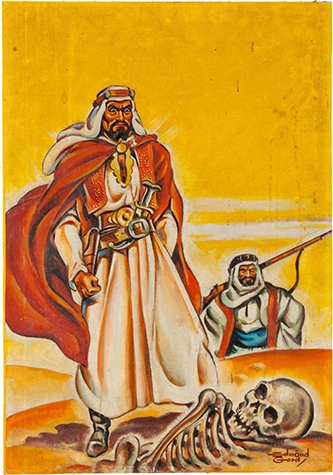
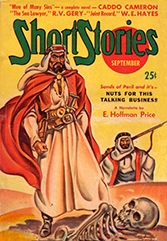
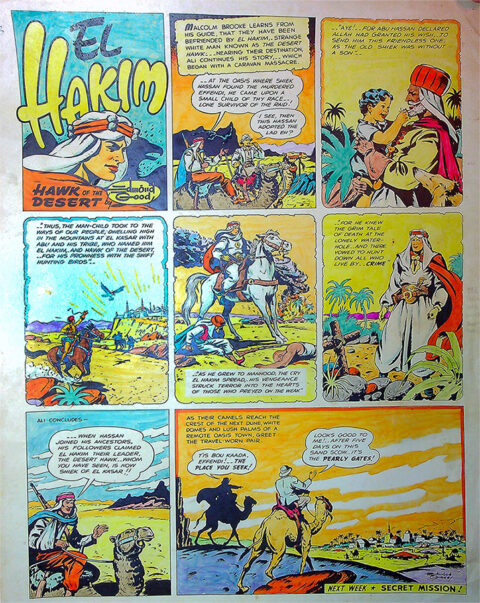
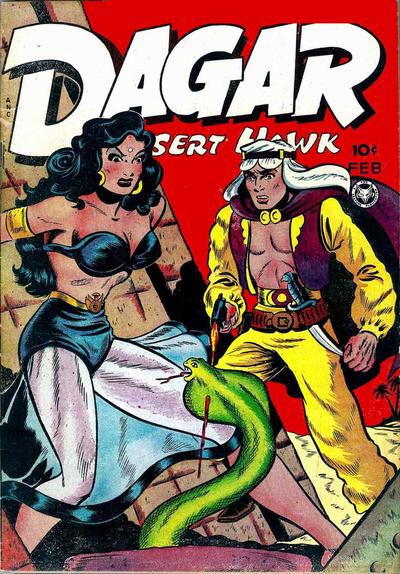
Harry Brunt was the second of these Hamilton-based Bell Features artists hired. He was born in Chicago in 1918. When Harry was seven, his father relocated the family to Simcoe in Southwestern Ontario. Here Harry drew for the high school newspaper and for the local paper when he finished school. He published his first piece in the early spring of 1943 in Joke Comics No. 9 and continued drawing for Bell Features until they stopped producing original comics in late 1946. While in Simcoe Harry’s day job was working at the American Can Co. in Niagara Falls and at night, he played trombone professionally in local dance bands. After the war ended, Harry was transferred to the Hamilton American Can Co. plant, soon met and married his wife, Doreen (who worked in the offices at The Can), had two kids (Harry’s son Stephen is a well-known sports journalist), drew sports cartoons for the Hamilton Spectator, and still played trombone at night and on weekends for dance bands. Harry died in 1987 in Hamilton.
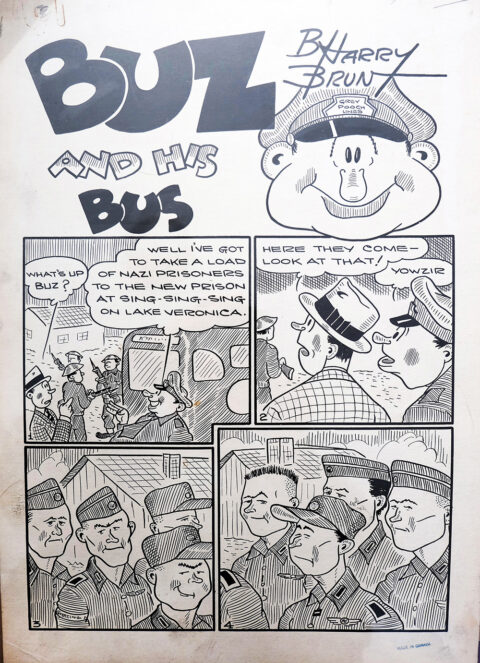
Aram Alexanian was the last of three Hamilton-related creators whom Bell Features hired. Aram was born and grew up in Hamilton. He was the son of carpet king, Aris Alexanian and was just shy of 16 when he began his first strip “Super Commando” in Joke Comics No. 12. Four pages of the prototype for “Super Commando” titled “Black Commando” are featured in the Steel City Supermen show. Alexanian went on to draw in Canadian comics until they disappeared after the war. He then did newspaper ads for his father’s company and eventually became president of the carpet and flooring company when his father passed away in the early 1960s. Aram died in 1988 and loved and collected comics and comic art right till the end.
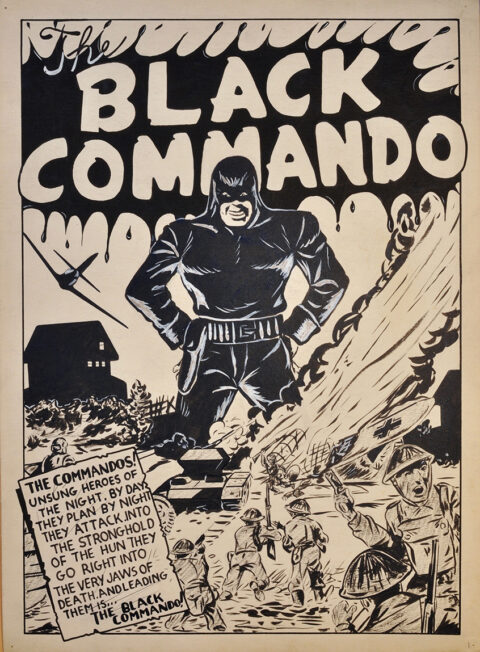
Win Mortimer, probably the most famous and well-known of the artists featured in my exhibit, though born and raised in Hamilton, never drew for Canadian comics. In 1943, after a short stint in the Canadian army, he was drawing motivation and propaganda posters for the Otis-Fensom Elevator Co. which had been newly converted to war-time munitions production and became the largest producer of the Bofors Gun in the British Empire. Ten of the original drawings for these posters are on display at the exhibit. After the war, Win headed down to New York City and became one of the major artists drawing Superman and Batman for DC. He died early in 1998 in the States.
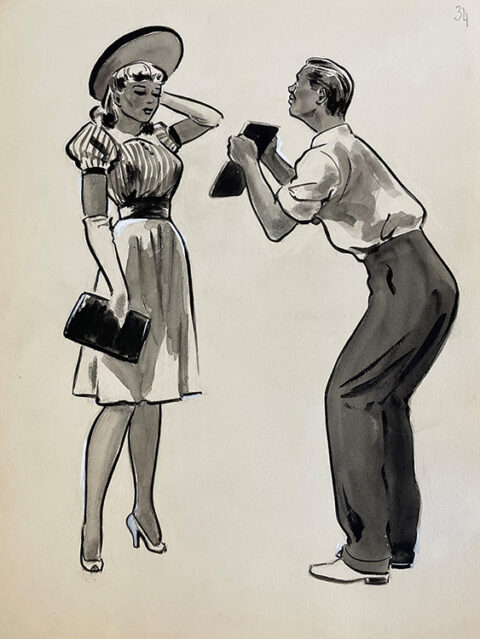
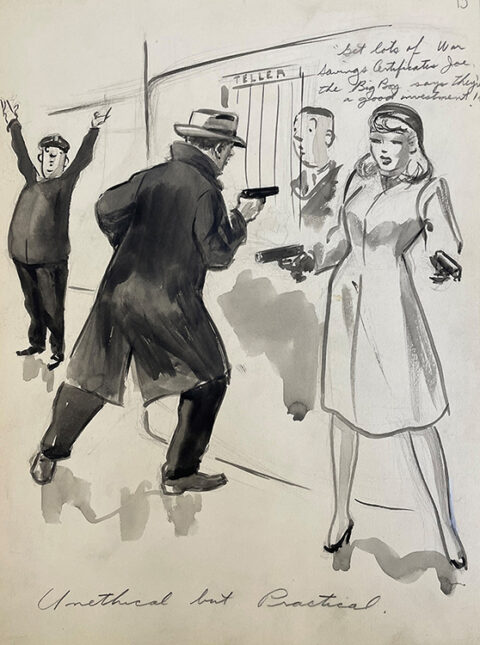
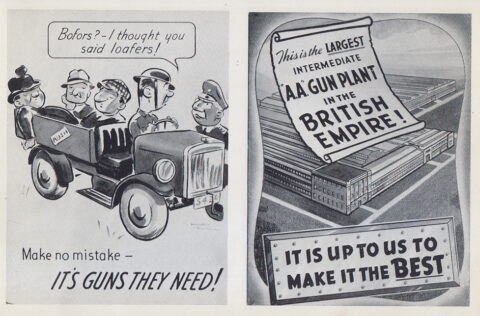
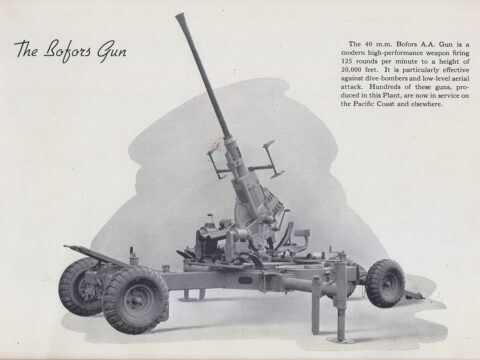
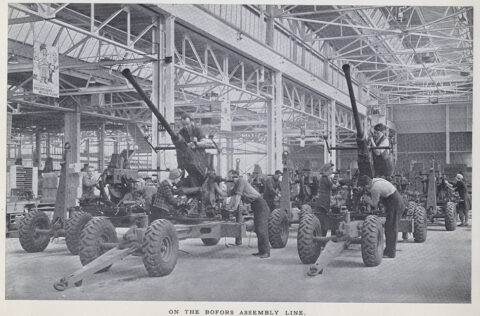
There are over 50 works by these four Hamilton-related WWII cartoonists, most of them originals, on display at the Steel City Supermen exhibit at the Carnegie Gallery in Dundas, Ontario. It’s worth viewing these seldom-seen originals and well worth seeing first-hand if you have the chance. The Carnegie is closed on Mondays, but open 10-5 on Tues., Wed., and Sat., 10-7 on Thurs. and Fri., and 12-4 on Sunday. Come out and see it if you can and learn a bit about some early comic book arts who had Hamilton connections.
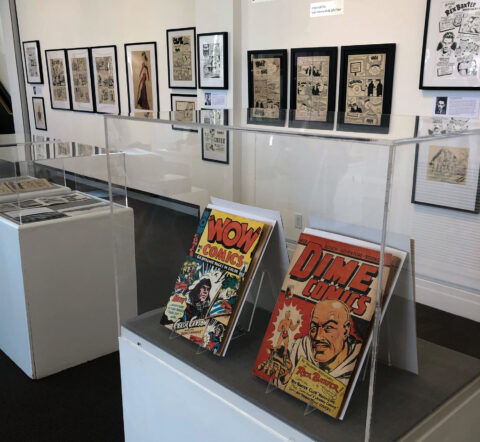
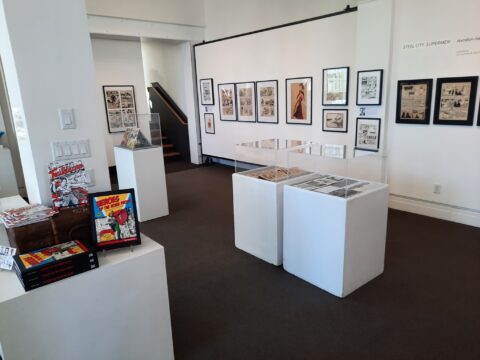
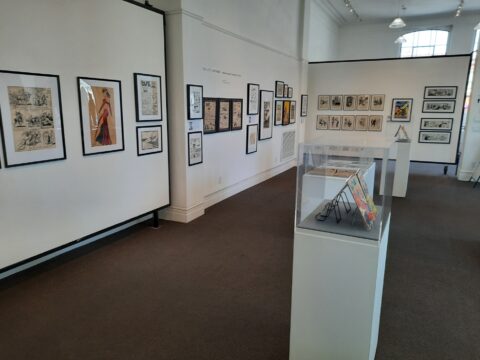
I’m also giving a talk related to the exhibit Thurs. March 24 at 7pm at the Carnegie Gallery that is free, but the gallery requires a registration by calling 905 627 4265. It would be great to meet up with any of you readers and find out what questions you may have.
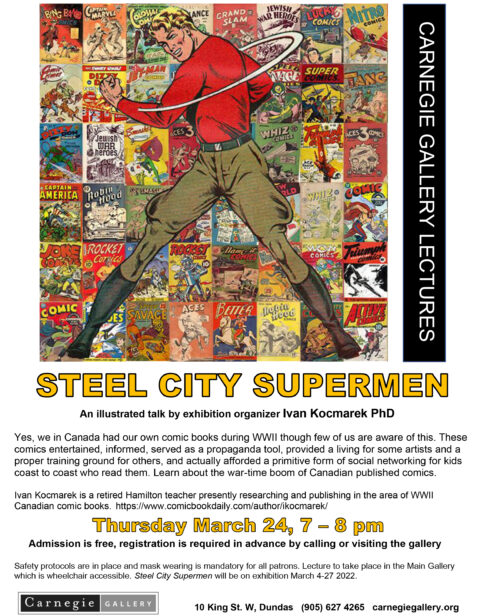




What an amazing number of Canadian artists and story tellers found a home in Hamilton to let loose their imagination and support the War effort.
Canadian went all in when it came to supporting freedom for the world and I look forward to going to your presentation.
I’ll have a 3 hour drive back home and have to get up at 4AM for a trip to Toronto next Friday for a 10 hour day for work after it.
Looking forward to seeing you at the gallery and the presentation on Thursday, Jim.
What a brilliant followup to the Trailblazers display, darn I wish I lived nearer to there. Classy exhibition and more great work, Ivan! Thank you for sharing this. Good info on Good, now I’m interested in his US work too. There’s an issue or two of Dagar up on ebay these days.
I really, really like Edmond Good’s work, so your detecting him out as the creator of Dagar is certainly fascinating. That El Hakim page in color is great! And even though I collect Star Spangled Comics, again, I didn’t know Good was the first Tomahawk artist. Duhh. I always thought that was all George Papp in those early days, who was not a bad artist himself and actually did some of his best work on Tomahawk.
But Good was always, well, damned good. Johnny Law, Sky Ranger is very well done and they are inexpensive and fun books to pick up. Rusty The Boy Detective I’m not so excited about, I think Good was better with an airplane strip, but he still always did first class work.
And that Dagar cover…it’s not quite up there with Matt Baker’s Fox covers, but its solid work. But the poor guy is nearly unknown today.
And Win Mortimer…I think he is neglected as a very, very important DC cover artist. Superman, Batman, Detective Comics, Action, Star Spangled, World’s Finest…he did cover after cover, all unsigned, but beautiful work beginning in 1945 and running into the early 1950s. He also did stories, but I think his covers are what really stand out and obviously the editors at DC recognized that and used him issue after issue. . As much as I like Jack Burnley’s classic early DC covers, which are far better known, Win probably did many MORE covers and yet gets very little recognition. He single-handedly was creating a DC house style on those covers, much like Infantino and Neal Adams were doing in the 1970s at DC.
The show you put on looks great. Congratulations!